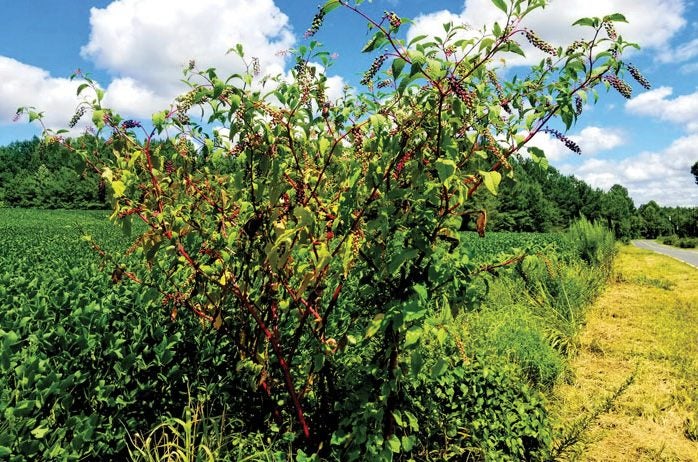Darrell Blackwelder column: Pokeberry can be rather invasive
Published 12:00 am Sunday, August 22, 2021

- Pokeberry
There is a giant weed that pops up in our hydrangeas every spring. No matter how many times my wife cuts it back, it always comes back. Pokeberry (Phytolacca americana) is a native plant that can be rather invasive. Pokeberry, also known as poke root, poke salad, poke berry, poke, inkberry, and a variety of other names, can get six to 10 feet tall with rather large, showy leaves. Pokeberry is a perennial plant that has a massive tap root that dies back each winter and returns the next season. It’s a very common weed that grows along edges of fields, highways or abandoned areas. An interesting feature of the pokeberry is its showy flowers followed by fruit clusters. Small shiny green berries eventually turn reddish-purple in late summer into fall. All parts of the plant, including the berries, are very poisonous. Ironically, the leaves and stems are often consumed if properly prepared. The berries are not poisonous to birds, providing a needed food source and a pollinator for insects. The dark berry sap was at one time used as a source of dark ink. Interestingly, gardeners in England often include pokeberry as a part of their perennial flower gardens. The towering plant can easily be spotted in London’s Kew Gardens perennial gardens. Go to https://plants.ces.ncsu.edu/plants/phytolacca-americana/ for more detailed information about pokeberry.
Darrell Blackwelder is the retired horticulture agent and director with the North Carolina Cooperative Extension Service in Rowan County. Contact him at deblackw@ncsu.edu .

